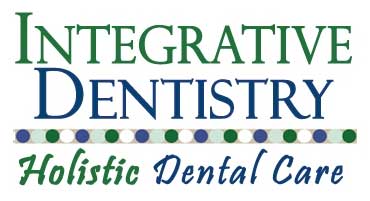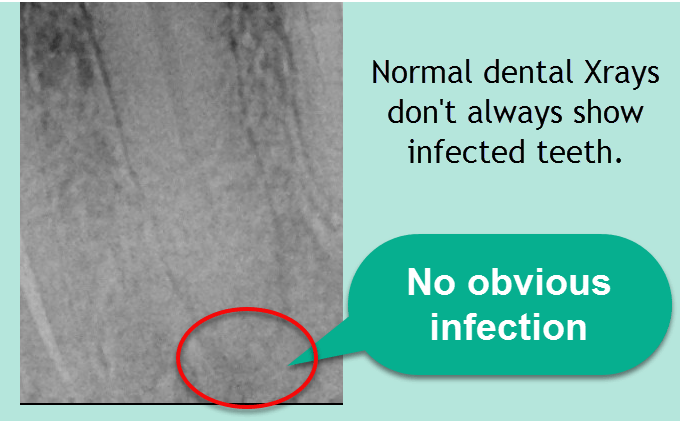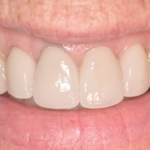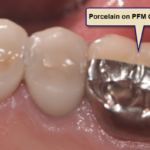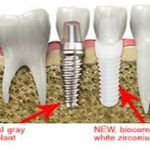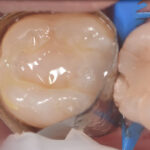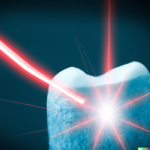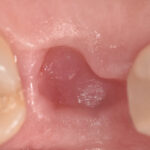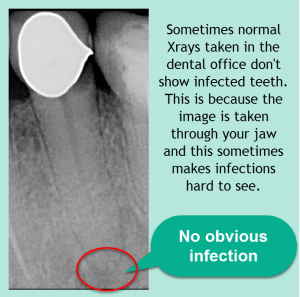 The best way to confirm if a tooth is infected is if the tooth hurts and if the tooth has extreme sensitivity to hot or cold that lingers for a long time rather than seconds. The second way to tell if your tooth is infected and needs a root canal is to take an xray.
The best way to confirm if a tooth is infected is if the tooth hurts and if the tooth has extreme sensitivity to hot or cold that lingers for a long time rather than seconds. The second way to tell if your tooth is infected and needs a root canal is to take an xray.
Why Do Some Dentists Recommend Root Canals and Others Don’t?
Some dentists are more conservative than other dentists and believe that it’s always better to preserve as much of the original tooth structure as possible. Other dentists believe it’s just better to get the patient out of pain by doing the root canal and thus are a little more proactive about it. Which way is best? Well, it depends on a lot of factors as every situation is different. But it also depends on the philosophy of the dentist you are seeing.
My phylosophy is that you cannot replace tooth structure once it’s gone, and nothing is as good as the original tooth. So, if you keep working on a tooth over and over, eventually it’s going to give way and you may loose the entire tooth. So in general, less is more when it comes to dentistry.
Is It Better to Do a Root Canal or Not?
The short answer is if the tooth is infected it’s better to do the root canal, because you don’t want to leave an infection in your body. Even if it’s only a tooth infection, it’s still an infection that will leak into your body. Not a good idea. The ultimate test of course is to just take an x-ray to verify the infection, and if there is an infection, my recommendation is to do the root canal.
However, if the tooth is not infectied yet, try to preserve the nerve if at all possible. This is because once you do a root canal, the nerve and blood supply to your tooth is gone, as they are removed during the root canal procedure. It’s always best to preserve the integrety and blood supply of the tooth if at all possible.
If the X-ray is Not 100% Clear, Do I Still Need a Root Canal if My Tooth Hurts
If your tooth hurts it’s probably due to deep decay. However, just because you have moderate or even deep decay, it doesn’t automativally mean you need a root canal. I can’t tell you how many teeth I have treated conservatively with fillings and prevented the need for a root canal. In fact I have a special protocol that I do in my practice that minimizes the risk of a root canal even if the decay is deep. You can read more about this protocol here.
Some technologies also help heal the teeth and the delicated nerve and blood supply inside the delicate pulp or canals of the tooth. Here is another article talking about these technologies, namely lasers and ozone:
What Does It Mean When My Tooth Hurts After Dental Work
If your tooth hurts after dental work, sometimes that’s normal post op pain or sensitivity that will go away in a matter of days or sometimes a couple of weeks.
However, if the pain persists, it may mean that the delicate nerve was traumatized or stressed during the dental work. Inquire with you dentist if the dental work was deep or close to the nerve. A lot of times the dentist will tell you during the procedure if this is the case.
Another way the nerve gets damaged is if too much heat is generated during the dental procedure and the nerve essentially gets burned. A burn is a burn, and it hurts. Usually this calms down as the nerve heals, but not always. It’s unfortunate that this happens at all. However, there is a way to avoid this from happening or at least minimize the risk. When the dentist uses his high speed handpiece to drill on your tooth, make sure there is ample water coming out to cool the tooth and bur bit at the same time. Constant and copious water ensures that the tooth is continually cooled during the procedure and thus the risk of burning the nerve is brought way down.
What Does It Mean When My Toothache Goes Away? Do I Still Need a Root Canal?
Have you ever had a tooth that hurt and then the pain went away. Most people would say yes. If the pain was due to a dying nerve, this can result in root canal infections that’s not even seen on normal dental Xrays and thus may go undetected for years. That is until recently. Because of 3D imaging, we can uncover hidden dental infections that are not healthy and need to be treated so that the underlying infection can be eliminated. This case highlights something that happens fairly frequently, namely infected teeth are not revealed with normal Xrays.
How Does a Root Canal Infection Get Missed?
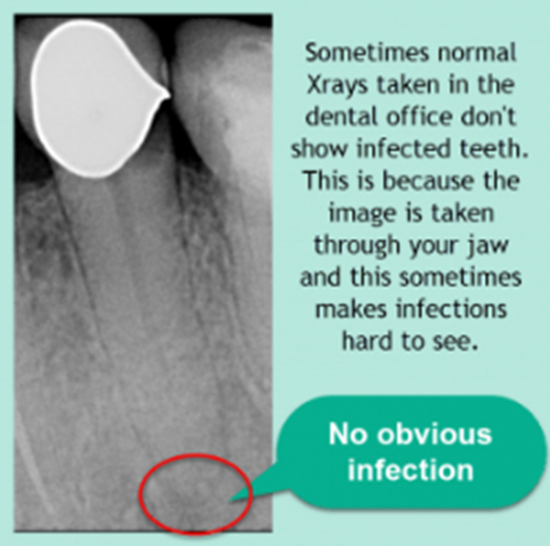
OK, let’s talk about the image to the left, it is fairly clear that this tooth has decay or a large cavity underneath the crown, however it is not clear whether the tooth is infected or needs a root canal. This is an example of a routine x-ray in the dental office. The end of the root is circled in red. As the caption says, there is no obvious infection with this tooth, which would show up as a black spot at the end of the root.
What About Old Root Canals I’ve Had in the Past
My question is how many infected teeth are being missed by imaging that is inadequate to uncover these infections? In the absence of symptoms what does one do? By the way, this is the biggest problem with root canal infections whether they are new or you had a root canal done on a tooth 10, 20 or even 30 years ago. In fact the older a root canal, the greater the chance it has become re-infected. What’s insidious about old root canals that are infected is that most of the time are asymptomatic, meaning your infected tooth never hurts you.
How to Uncover Hidden Root Canal Infections
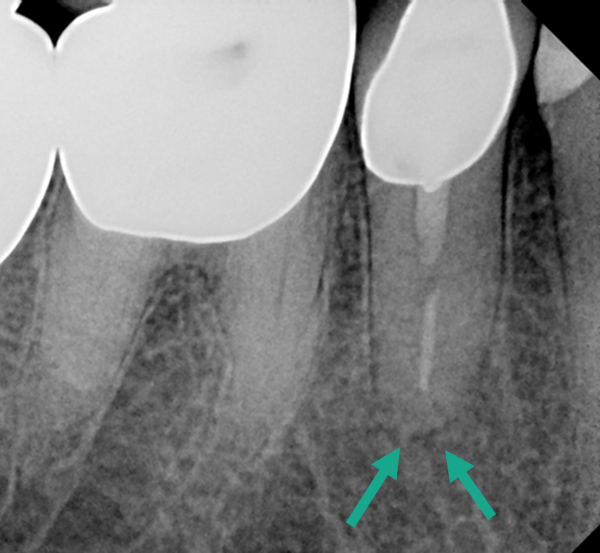
Here is a normal PA X-ray that shows no evidence of a root canal infection, as indicated with the green arrows. This can happen sometimes because a PA x-ray is a 2 dimentiional image and the infection can be masked by the bone structure of your jaw.
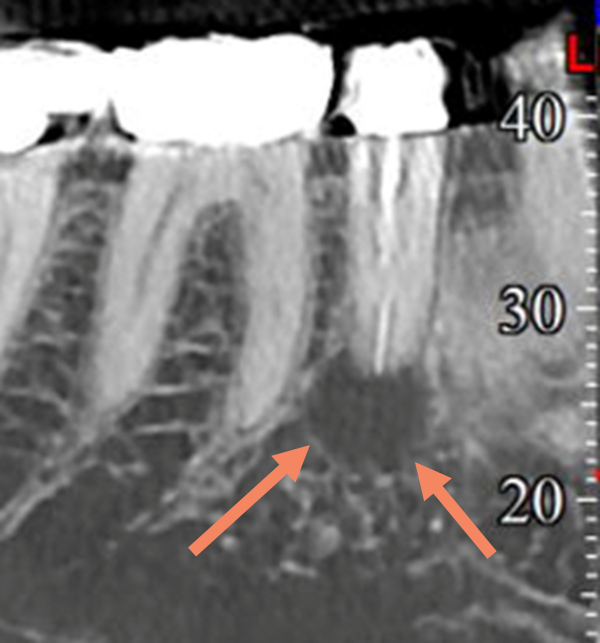
Here is a 3-D Cone Beam image of the same tooth. As you can see the infection at the end of the root is very clear and apparent, as highlighted with the red arrows.
In this case it just so happened that we did a 3D scan image for this patient because he had many old root canals that he had questions about. It is very interesting what was revealed when we looked at the image.
Please see my posts about how we do root canals in my office. You can find them on my home page or blog. Here are a few examples:
Interesting stuff! Let me know your thoughts below.

Carey O’Rielly DDS has been a practicing dentist for 35 years. He went to USC Dental School and Duke University for his undergraduate degree. He grew up in Laguna Beach and now lives in La Costa with his wife Victoria, who runs his office.
He began his career by owning and operating a network of six offices in the San Francisco Bay Area. Presently he owns a private holistic practice in North County San Diego’s Encinitas.
Dr. O started looking for solutions to his health challenges that resulted from the stress and environmental toxicity that built up over a ten year period running his dental network. He has dedicated himself to learning about oral systemic problems and how dentistry can affect your health. He has applied what he has learned over the last twenty years to ensure he, his staff and his patients are protected from the chemicals and toxic materials found in most dental offices. He has produced an environmentally friendly office that is also peaceful and calm.
He is an expert on dental materials having looked at hundreds of biocompatibility lab tests over the years. He has identified the most bio-friendly materials to use in his practice and which dental materials can be used to replace metal fillings and crowns, including BPA free and fluoride free ‘white’ fillings. He also uses metal-free Zirconia or ceramic implants and PRF (platelet-rich fibrin) grafting materials which come from the patient’s own blood.
Dr. O’Rielly teaches C.E. courses on the systemic effects of gum disease. He is an expert in using phase contrast microscopy for analyzing dental infections, where he shows patients what kind of microbes, i.e. bacteria, amoeba, and yeasts like candida are populating the mouth and affecting the body as a whole.
He has an educational blog and is writing a book on dental health called ‘Hidden Dental Infections: Healing Root Canals and Infected Teeth with the Erbium Laser’ where he discusses dental nutrition, toxic dental materials and the effects of old root canals on inflammation and overall health.
